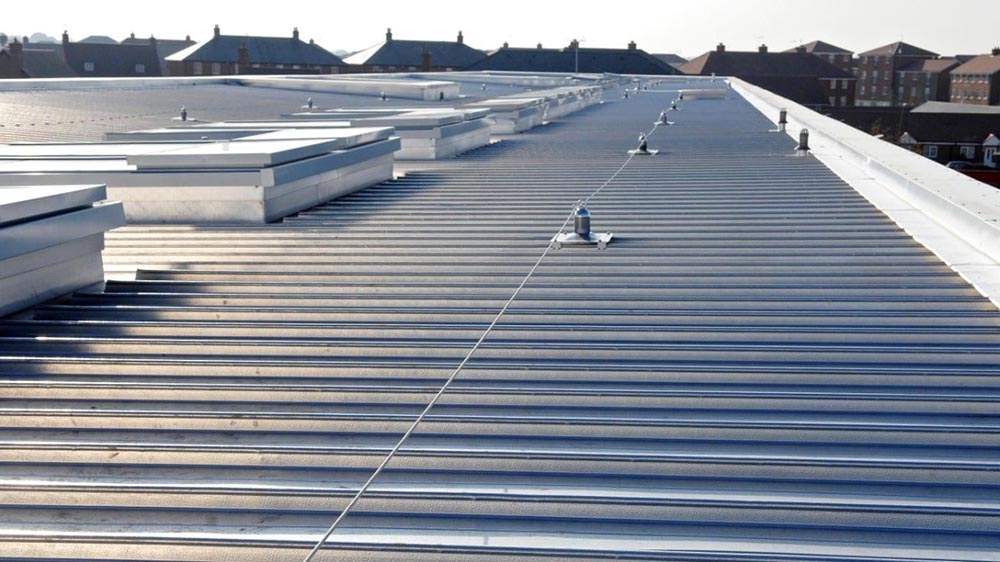Commercial roofing, a critical aspect of the construction industry, has witnessed remarkable advancements over the years. As technology continues to evolve and sustainability becomes a paramount concern, the future of commercial roofing is taking shape in exciting and innovative ways. In this blog, we will explore the emerging trends and developments that are shaping the future of commercial roofing.
- Sustainable Roofing Materials
One of the most significant shifts in commercial roofing is the emphasis on sustainability. As the world grapples with environmental challenges, there is a growing demand for eco-friendly roofing materials. In the future, we can expect to see a wider adoption of materials like cool roofs, green roofs, and solar roofing systems.
- Cool Roofs: Cool roofs are designed to reflect sunlight and absorb less heat, reducing the building’s cooling load. They help mitigate the urban heat island effect and lower energy consumption.
- Green Roofs: Green roofs, adorned with vegetation, provide natural insulation, improve air quality, and reduce stormwater runoff. They offer numerous environmental benefits while enhancing the building’s aesthetics.
- Solar Roofing: Solar roofing systems incorporate photovoltaic cells into roofing materials, converting sunlight into electricity. They contribute to energy efficiency and sustainability.
- Advanced Roofing Technologies
The integration of advanced technologies is revolutionizing the commercial roofing industry. These innovations not only enhance the performance of roofing systems but also simplify maintenance and monitoring.
- Smart Roofing Systems: Smart roofs are equipped with sensors and monitoring devices that collect data on weather conditions, temperature, moisture levels, and potential leaks. This real-time data helps facility managers make informed decisions and detect issues early.
- Drones and Robotics: Drones and robots are increasingly used for roof inspections and maintenance. They can access hard-to-reach areas and provide detailed assessments without the need for human intervention.
- Virtual Reality (VR) and Augmented Reality (AR): VR and AR technologies are being employed for training and simulations in the roofing industry, improving safety and efficiency.
- Energy-Efficient Roofing
With rising energy costs and a growing focus on energy efficiency, the future of commercial roofing will prioritize energy conservation. Roofing systems will be designed to minimize heat transfer, reduce energy consumption, and enhance insulation.
- High-Performance Insulation: Advances in insulation materials will result in better thermal performance, reducing the need for heating and cooling.
- Cool Roof Coatings: Cool roof coatings will become more prevalent, reflecting sunlight and reducing heat absorption, which can significantly lower energy costs.
- Durability and Longevity
Commercial roofing systems of the future will be engineered for durability and longevity. Innovations in materials and construction techniques will extend the lifespan of roofs, reducing the need for frequent replacements.
- High-Performance Roof Membranes: Roofing membranes will become more resilient, with enhanced resistance to weathering, UV radiation, and environmental stressors.
- Modular Roofing Systems: Modular roofing systems will gain popularity, allowing for easy replacement of damaged sections without disrupting the entire roof.
- Sustainable Practices
Sustainable practices in the commercial roofing industry will encompass not only materials but also installation methods and waste reduction.
- Recycling and Reuse: Recycling and reusing roofing materials will become standard practice, reducing waste and conserving resources.
- Energy-Efficient Installation: Roofing contractors will adopt energy-efficient installation techniques that minimize disruptions to building occupants and lower carbon footprints.
- Green Certification
As environmental awareness grows, green certification for commercial roofing systems will become more common. These certifications ensure that roofing materials and practices meet specific sustainability criteria, allowing building owners to make informed choices that align with their environmental goals.
Conclusion
The future of commercial roofing is a dynamic landscape shaped by sustainability, technology, energy efficiency, and durability. As the world grapples with climate change and environmental concerns, the roofing industry is poised to play a pivotal role in constructing eco-friendly and energy-efficient buildings.
While these advancements hold great promise, it’s essential to note that the successful implementation of these innovations often requires the expertise of professional roofing contractors. Commercial building owners and facility managers should work closely with experienced roofing professionals to ensure that roofing systems are designed, installed, and maintained to meet the demands of the future, providing both environmental benefits and long-term value.
Brea Roofing https://www.brea-roofing.com

